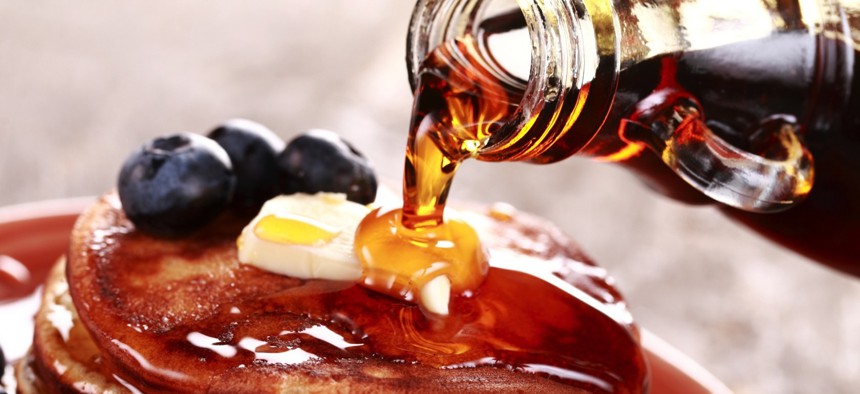While Vermont Is Still the King of Syrup, This State Is Savoring Its Own Sweet Success

Mmmmmm, pancakes. Magdalena Kucova / Shutterstock.com
A bitterly cold winter limited the amount of time to collect raw sap, but that short season turned into record production.
How sweet it is. For some New York state farmers anyway, and maybe waffle and pancake eaters, too.
Maple syrup production levels in the Empire State hit a 70-year high in 2015, Gov. Andrew Cuomo’s office announced on Tuesday. For the third year in a row, New York edged out Maine to keep its rank as the second-largest maple syrup producing state in the nation.
Vermont remains the undisputed top dog in the U.S. maple syrup sector. Producers there turned out roughly 1.3 million gallons in 2015, more than the combined amount from New York and Maine, and approximately 41 percent of the 3.4 million gallon nationwide total.
Farmers in New York produced 601,000 gallons of the sweet stuff this year, according to U.S. Department of Agriculture statistics released earlier this month. On Tuesday, Cuomo’s office touted the fact that this is the greatest amount of syrup production in the state since 1944.
Maine was not far behind New York, checking in with 553,000 gallons of syrup.

Especially cold weather in late winter limited the days when New York farmers could collect raw sap from maple trees this year. The sap, which is used to make maple syrup, only flows from the trees when temperatures rise above freezing.
Based on USDA figures, the 2015 season lasted 26 days, compared to 32 days last year and 40 days in 2013.
“We are pleasantly surprised and very pleased to have had a short season turn into record production,” Helen Thomas, executive director of the New York State Maple Producers Association, said in a statement.
Maple syrup production in New York began to tick upwards in 2008 after remaining relatively flat for over a decade. This rise in production is at least partly attributable to vacuum pumping technology now commonly used to collect sap on bigger farms. The pumping systems are used in place of traditional sap-collection techniques, which involved metal taps and hanging buckets.
NEXT STORY: How mobile impacts local government communications






